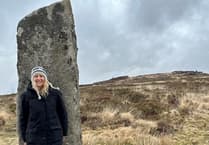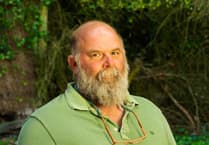THE discovery of a prehistoric tomb on North Dartmoor has revealed an internationally important collection of artefacts.
In August 2011, excavation work began on a cremation burial chamber discovered on Whitehorse Hill near Fernworthy Forest.
Co-ordinated by Dartmoor National Park Authority with funding from English Heritage, the excavation has revealed an internationally important collection of early Bronze Age organic remains and artefacts. The discovery of these remains, which are more than 4,000 years old, could prove to be one of the most important archaeological finds of the last 100 years.
Analysis of the tomb's contents has revealed preserved human remains, beads, and a collection of other artefacts. The discovery of amber, which is not found in this country, suggests there were trade routes between Britain and other countries.
Jane Marchand, Dartmoor National Park Authority's senior archaeologist and Whitehorse Hill project manager, said: 'The survival of so many organic remains and artefacts is just astonishing. In the cist there was a beautifully woven basket made of natural fibres, full of beads and other artefacts.
'There was also a wrist band with tin studs. This is the first evidence to show of tin being worked during the Bronze Age. There were also ear studs of wood discovered, which after so many years is just extraordinary. The human remains were wrapped in an animal pelt, which we have yet to discover what it was, which is exciting.
'The discovery will open up a whole new way of looking at life on Dartmoor.
'The discovery is not just important to Dartmoor but nationally, and the survival of so much in such a condition is incredible.'
The tomb, or cist, was discovered tenyears ago when its end stone fell out of the peat which had been concealing it.
A temporary wall was erected in front of this area in an attempt to protect any archaeology which it was likely still to contain. The cist is particularly unusual because of its situation within peat and its apparent isolation from other known prehistoric archaeological sites.
The location of the burial at 600 metres above sea level on the northern moor begins to fill in the blanks on the map, as before the discovery there was very little evidence that existed of prehistoric activity in this area.
After the excavation in 2011, the tomb's contents were moved to the Wiltshire Conservation Service laboratory in Chippenham for analysis. These studies of the various remains is being undertaken by national and international specialists.
The discovery has garnered national attention, attracting experts from the universities of Brussels, Copenhagen, Oxford, Edinburgh and Plymouth as well as scientists from the British Museum.
The tomb was featured on the BBC Inside Out South West programme on Monday evening. A major exhibition focusing on the burial site will take place at Plymouth City Museum and Art Gallery from September 2014 to December 2014.



